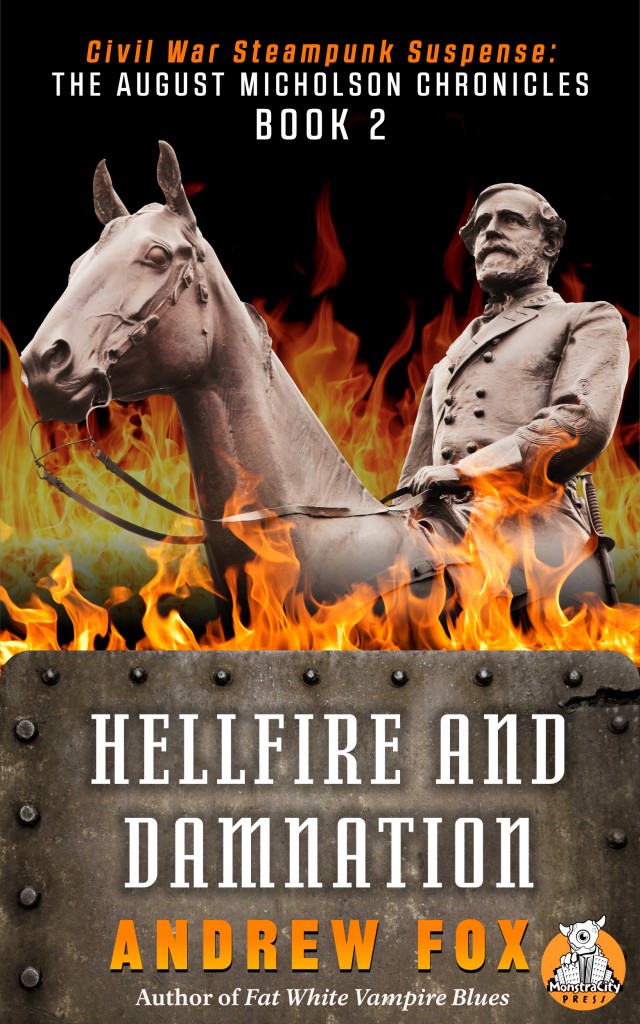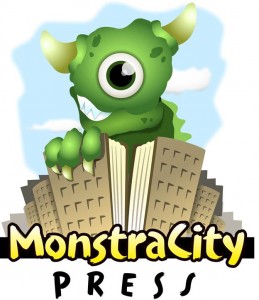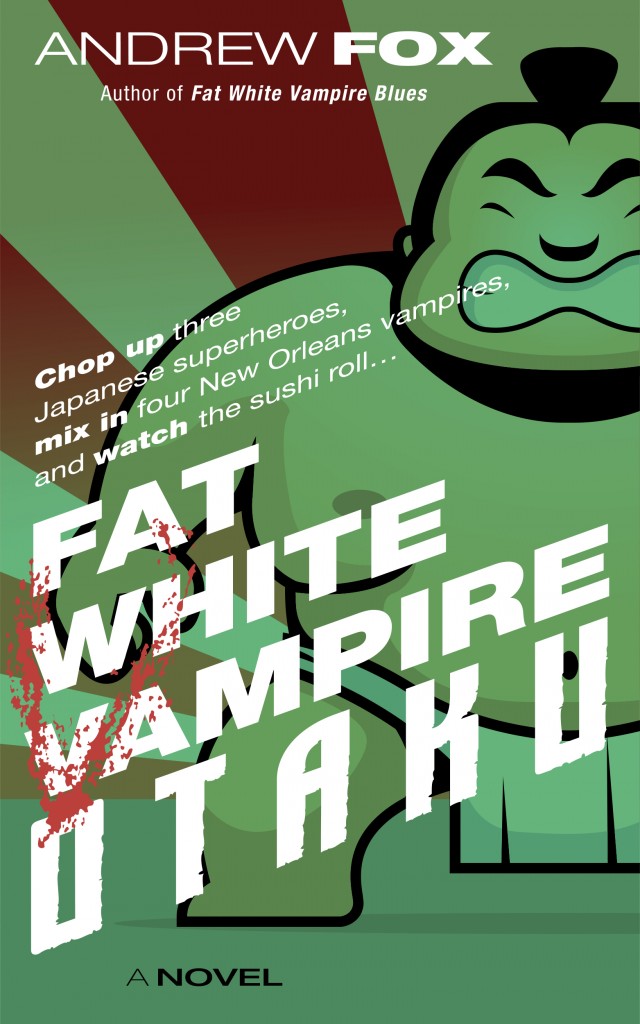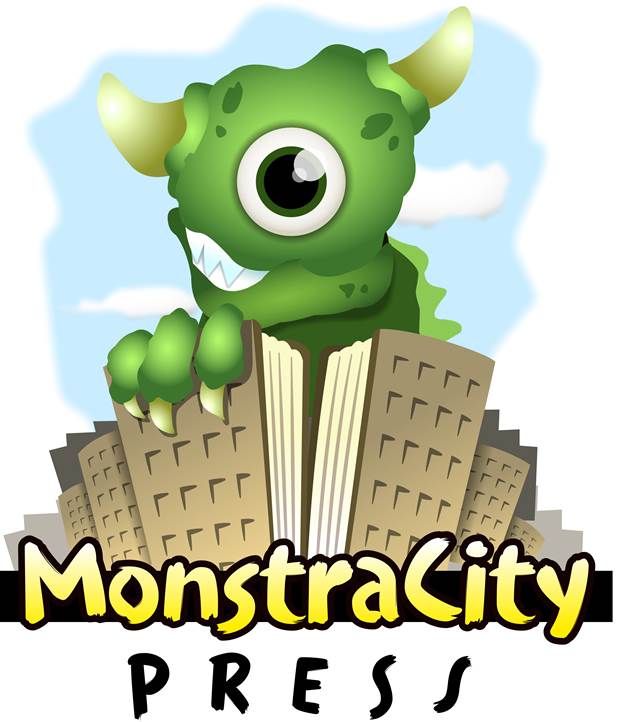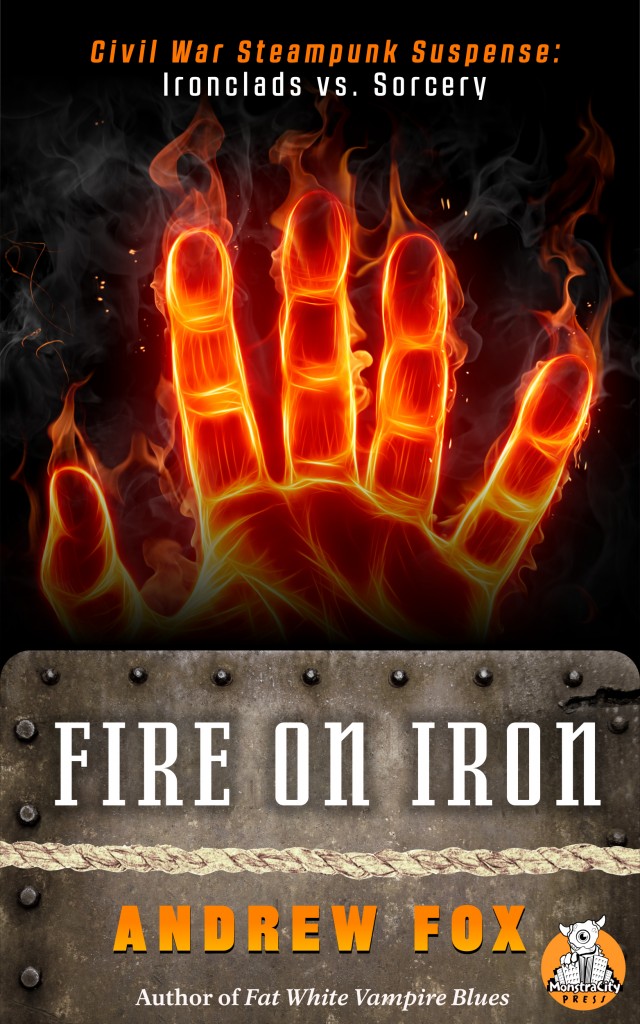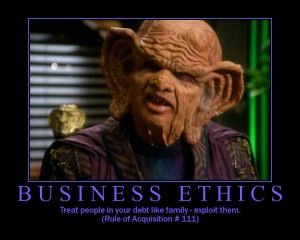When I first put out word that I wanted to do a modern-day re-imagining of Harlan Ellison’s classic 1967 anthology of original science fiction, Dangerous Visions, a good and wise friend suggested that I keep a journal of my experiences, gently pointing out that I should expect “interesting times,” in the Chinese sense. Little did I know the “interesting times” would get so interesting, so fast!
My original notion for my Kickstarter project was a modern-day responsa to Dangerous Visions, a cultural milestone from the New Wave era of science fiction and a period of momentous change in American society. I thought the time was ripe, given the spread of call-out culture and de-platforming from the university/higher education sphere into popular culture — most definitely including science fiction and its conventional publishing imprints — to do The New Dangerous Visions, focusing on the taboos of today.
I wanted to be considerate of Susan Ellison’s, Harlan’s widow’s, feelings, so, in searching for a contact email, I reached out to her through a representative from one of the Ellison Estate’s organizations. I knew that titles do not fall under copyright, but I also knew the possibility existed that the Estate had trademarked “Dangerous Visions,” so I wanted to find that out, as well. Below is my exchange of messages with the Estate.
———————————————
Andrew Fox
Mon, Apr 22, 7:23 PM
to ellison.editor
Hello! I’m Andrew Fox, a sf, horror, and fantasy writer, good friend of Barry Malzberg’s, and a lifelong fan of Harlan’s. I’d like to reach Susan Ellison regarding an anthology I would like to edit in Harlan’s honor. Is this a good email address to use?
Best wishes,
Andrew Fox
———————————————
Harlan Ellison Book Preservation Project
Apr 22, 2019, 8:07 PM
to me
Andrew,
I’ll relay your proposal to Susan.
Be aware there’s already an Ellison tribute anthology available for pre-order from PS Publishing.
Director, Harlan Ellison Book Preservation Project
———————————————-
Andrew Fox
Apr 22, 2019, 8:54 PM
to Director, Harlan Ellison Book Preservation Project
Dear Director,
Thank you for reaching back to me, and thank you for letting me know that an official tribute volume to Harlan Ellison has been prepared; I’ll look forward to reading it. Actually, the anthology I have in mind is a bit different. Although it would serve, in part, as a tribute to Harlan’s irreplaceable work, it would be primarily a responsa to one of his most famous and enduring literary efforts. I’d like to do a modern-day version of DANGEROUS VISIONS, tentatively titled THE NEW DANGEROUS VISIONS. I’ve started gauging interest from possible contributors, including folks I know through my membership in SIGMA, the science fiction think tank. If I get at least half a dozen notable (or reasonably notable) folks to express interest in contributing, then I’ll raise funds to pay the contributors market rates through one of the crowd-funding platforms.
Here’s my precis…
“Fifty-two years ago, in 1967, writer and anthologist Harlan Ellison captured the attention of the science fiction community (as well as much of the larger literary community) with his publication of the largest original anthology of science fiction printed to that time, DANGEROUS VISIONS. Ellison solicited stories from both science fiction’s established roster of writers and from the most talented newcomers; several writers (including Samuel Delany) broke into the field with their submissions to DANGEROUS VISIONS and later attained lasting renown in the field. Ellison asked for submissions that couldn’t be printed in the science fiction magazines of the time, nor in other, conventional science fiction anthologies. He sought taboo-shattering stories, and he received them… stories that centered around incest, homosexuality, bisexuality, cross-species sex, women’s liberation, sadism, graphic violence, blasphemies against widely held religious beliefs, an all-pervasive welfare state, the moral limitations of capitalism, and the pervasiveness of bigotry. Five years later, in 1972, he followed up with an even larger, two-volume anthology of original works, AGAIN, DANGEROUS VISIONS. Ellison promised his readers a third and final anthology, THE LAST DANGEROUS VISIONS, but, despite soliciting and receiving dozens of submissions from major writers, he was never able to finish writing the thousands of words of story introductions and after words, and, despite repeated promises to fans and interviewers over the years, THE LAST DANGEROUS VISIONS remained incomplete and became the most famous/infamous work of science fiction never to be published. DANGEROUS VISIONS and AGAIN, DANGEROUS VISIONS have remained almost continuously in print over the succeeding decades and have come to be recognized not only as classic science fiction anthologies but as key cultural artifacts of the late 1960s and early 1970s, paradigmatic works of science fiction’s New Wave that reflected rapidly changing artistic, cultural, and social mores in the U.S. and the western world.
“In the decades since DANGEROUS VISIONS’s publication, what was originally taboo-breaking has become the common mental furniture of the science fiction field and much of the rest of the arts. Virtually none of the stories published five decades ago in either of these ground-breaking anthologies would be considered shocking or disturbing to most of the readership today. Yesterday’s transgressions are today’s cultural virtues and/or commonplaces. This poses a question: if DANGEROUS VISIONS were to be published today, with the same goal of seeking to present science fiction that cannot be published elsewhere, due to commercial and cultural barriers, what sorts of stories would it contain? What are TODAY’S taboos, and how do they relate to the taboos Harlan Ellison and his contributors confronted in 1968 and 1973? How can these modern-day taboos be illuminated and sharply delineated through fiction and productively extrapolated and explored using the unique tools of science fiction?
“THE NEW DANGEROUS VISIONS will seek to answer these questions and to play a similar role in the culture — the culture of science fiction as well as the overarching culture — that Harlan Ellison’s anthologies played five decades ago. Contributions will be sought from established science fiction writers, writers who have made their marks outside the science fiction field, and new writers — just as Ellison did with the original DANGEROUS VISIONS. The project will be initially funded through a crowd-sourcing platform, which will both raise money, establishing the financial viability of the project, and serve to publicize the project and help get the word out to potential contributors. Such contributors will be asked to submit, not merely their best work, but work which, due to its content, viewpoint, and subject matter, has little or no chance of being published elsewhere.”
I intend for this anthology to serve as a cultural snapshot in time, just as the original DANGEROUS VISIONS and its sequel volumes served. I think the culture can benefit from a new dose of DANGEROUS VISIONS every half-century or so, if only to provide signposts of where we’ve been and where we’re possibly heading as a society. One of the best ways to know a culture is to know what it fears, hates, and forbids.
In addition to being a longtime friend of Barry Malzberg’s, I was also a student and friend of George Alec Effinger’s in New Orleans. I learned many of my editing skills at George’s feet. I know that George and Harlan were close for many years before they drifted apart. I wanted to provide Susan the courtesy of making her aware of my plans before I sign up with a crowd-funding platform and she becomes aware of the anthology third-hand, so that she may offer her comments and input.
Thank you for passing this message along. I truly appreciate it.
Best wishes,
Andrew Fox
——————————————————
Weeks passed. I didn’t hear back from my correspondent from the Ellison Estate or any other representatives. So I went ahead and put up the following project description on Kickstarter.
——————————————————
THE NEW DANGEROUS VISIONS
An anthology of original science fiction. A re-imagining of the classic 1967 anthology. DANGEROUS VISIONS, exploring today’s taboos.
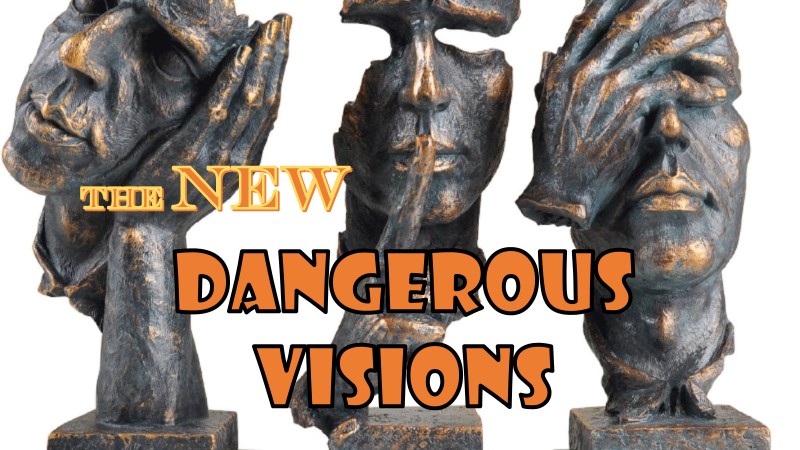
Fifty-two years ago, in 1967, writer and anthologist Harlan Ellison captured the attention of the science fiction community (as well as much of the larger literary community) with his publication of the largest original anthology of science fiction printed to that time, DANGEROUS VISIONS.
Ellison sought submissions that couldn’t be printed in the science fiction magazines or anthologies of the day. He asked for taboo-shattering stories. And he got them! The 32 stories included tales that explored the ramifications of incest, homosexuality, bisexuality, cross-species sex, women’s liberation, sadism, graphic violence, blasphemies against widely held religious beliefs, an all-pervasive welfare state, the moral limitations of capitalism, and the pervasiveness of bigotry. Some of science fiction’s most illustrious writers submitted pieces, including Ray Bradbury, Damon Knight, Philip K. Dick, and Theodore Sturgeon. But Ellison was especially eager to purchase stories from talented newcomers. Several writers who were later to become stars in their own right, including Samuel Delany and Gene Wolfe, broke into the field with their submissions to DANGEROUS VISIONS or its even larger sequel, the two-volume anthology AGAIN, DANGEROUS VISIONS, published in 1972.
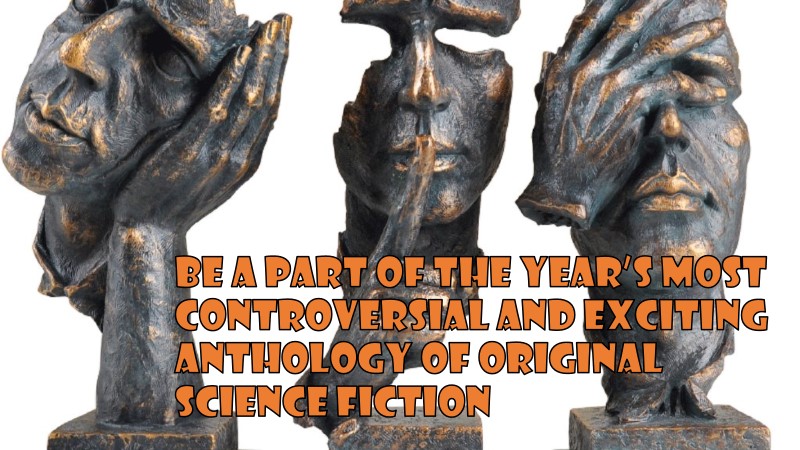
DANGEROUS VISIONS and AGAIN, DANGEROUS VISIONS have remained almost continuously in print since their original publication. Both have come to be recognized, not only as classic science fiction anthologies, but as key cultural artifacts of the late 1960s and early 1970s – paradigmatic works of science fiction’s New Wave that reflected rapidly changing artistic, cultural, and social mores in the U.S. and the Western world.
Five decades have passed since the emergence of that cultural milestone. It’s time to peer through that vertigo-inducing looking glass again. It’s time for THE NEW DANGEROUS VISIONS.
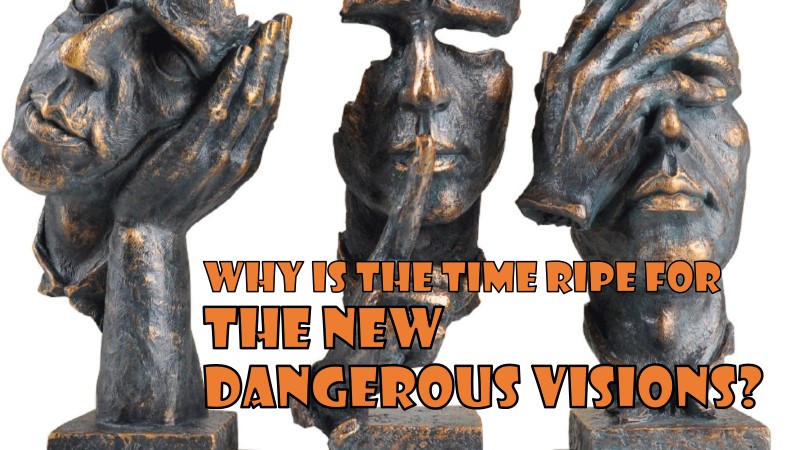
I believe one of the best ways to know a culture is to learn what it fears, hates, and forbids.
In the decades since DANGEROUS VISIONS’s publication, what was originally taboo-breaking has become the common mental furniture of the science fiction field and much of the rest of the arts. But this does not mean that new social prohibitions have not risen to take the place of old ones. What are TODAY’S taboos? What kinds of science fiction stories are verboten in today’s commercial publishing market? How can these modern-day taboos be illuminated and explored using the unique extrapolative tools of science fiction?
These are the questions THE NEW DANGEROUS VISIONS will seek to answer.

I’m Andrew Fox. I’m the author of the award-winning comic-horror novel, Fat White Vampire Blues (2003), and its sequel, Bride of the Fat White Vampire (2004). My third novel, The Good Humor Man, or, Calorie 3501 (2009), was selected by Booklist Magazine as one of the Ten Best Science Fiction and Fantasy Novels of the Year. I’m also a member of SIGMA, the science fiction think tank. I learned how to edit a story from being a part of George Alec Effinger’s writing workshop for fourteen years. My day job involves managing acquisitions of information systems. One of my biggest personal accomplishments was organizing one of the most successful citizen-led anti-violence campaigns in New Orleans’s history. After my cousin Amy Silberman was killed by celebratory gunfire on New Year’s Eve in 1994, I co-founded the New Year Coalition Against Holiday Gunfire. Over the next six years, the New Year Coalition’s public safety education campaign helped reduce annual injuries from New Year’s Eve gunfire from a dozen casualties or more to zero.
Why do I want to get this anthology done? Am I, a little-known writer who seeks to step into Harlan Ellison’s gigantic shoes, a narcissist and an attention-grabber? Well, uh, sure, there’s a little of that going on (gotta be honest here). But the main impetus for my wanting to see THE NEW DANGEROUS VISIONS come to fruition is that I have been an ardent fan of science fiction since before I learned to read. I grew up on a steady diet of Robert Silverberg, Ursula K. Le Guin, Gene Wolfe, Vonda McIntyre, Anne McCaffrey, Barry N. Malzberg, and Harlan Ellison. Our present-day drift towards censorship – not censorship by the government, but censorship of unpopular ideas by media companies, commercial publishing, and internet content/social media providers, and censorship through shaming mobs, and the self-censorship that comes from writers wanting to remain able to make a living in their chosen field – worries me greatly. Science fiction is often called “speculative fiction.” Speculation and extrapolation – asking what if? and why? or how? – is the life’s blood of science fiction. Science fiction writers can’t wrap themselves in yellow CAUTION tape. They need to be free to follow their what ifs? wherever those speculative rabbit-holes may lead… even if they lead to dark, dank, unpleasant places.
How many readers in Mary Shelley’s day wanted to read a tale in which Man abrogated the creative power of God? The existence of such a tale was a scandal in some quarters.
How many readers in H. G. Wells’s day wanted to read a tale in which the center of the world-spanning British Empire was itself colonized by invaders from another planet? The existence of such a tale was a scandal in some quarters.
How many readers in Philip Jose Farmer’s day wanted to read a collection of tales in which human beings engaged in sexual relations, not merely with persons of a different race or religion, but with members of bizarre alien species that had evolved light years distant from Earth? The existence of such tales was a scandal in some quarters.
How many readers during the glory days of the Apollo Program wanted to read a tale by Barry N. Malzberg that predicted bureaucratic dysfunction and its associated pathologies would cripple the U.S. manned space program (and drive astronauts insane)? The existence of such tales was a scandal in some quarters.
Yet each of these authors and their scandalous tales opened spaces for new viewpoints and fresh ways of thinking, pushing the great centuries-spanning conversation at the heart of science fiction forward.
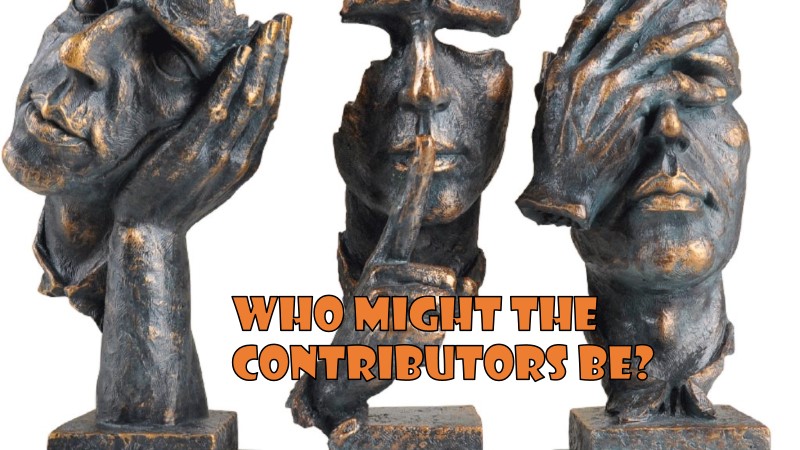
I’ve lined up some contributors whose names are widely recognized in the science fiction field, including some who contributed to the original DANGEROUS VISIONS or AGAIN, DANGEROUS VISIONS or who pitched a story to one of those anthologies but didn’t manage to make the cut (but who went on to have noteworthy careers in science fiction or fantasy).
However, just as Harlan Ellison did, I’m primarily looking for talented beginners, those at the start of their writing careers or those whose work shows genuine literary skill but who have had a difficult time breaking into a contracting and commercially conservative publishing field. I’m also eager to feature strong work from those who have suffered “one-book-and-you’re-out” syndrome (those who’ve managed to get one book in print through a traditional publisher, but whose first-and-only book did not meet expectations, and therefore found themselves unable to follow up, since publishers no longer bother with gradually building up an author and his/her audience over time).
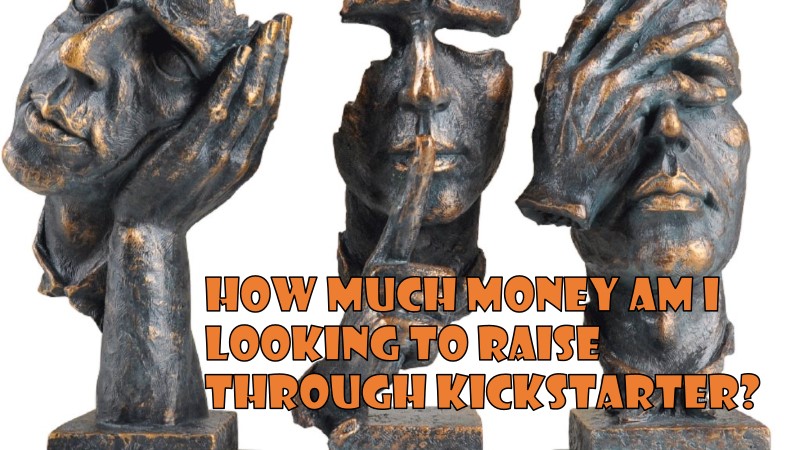
I intend to pay a professional rate, $.06 per word, for approximately 70,000 words of original fiction (not quite the size of the original DANGEROUS VISIONS, but hey, we all have to start somewhere!). To accommodate payments to contributors, book production costs (cover art, design, etc.), fees paid to Kickstarter, and the costs of premiums to be offered to donors, I aim to raise $7,000.00.
Should I exceed that amount, I will increase the maximum size of the collection accordingly, accepting more story submissions. Each additional $500.00 raised allows me to pay for an additional 8,000 words, which could be two 4,000-word stories added or an additional 6,000-word story and a 2,000-word short-short. Any funds raised beyond $8,500.00 will be put towards the publication of a second volume (which’ll be titled AGAIN, NEW DANGEROUS VISIONS – what else?). Raising at least $15,500.00 will guarantee the publication of both a first and a second volume.
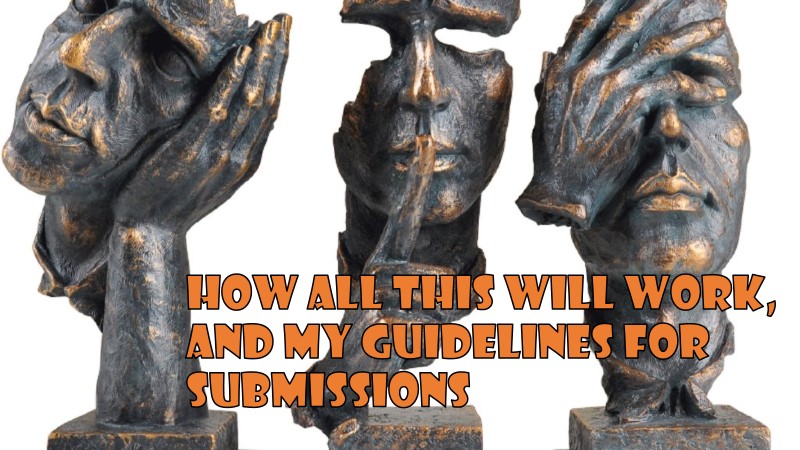
Kickstarter does not charge contributors unless and until the minimum fund-raising goal is met. This means that if you pledge $25, but the pledged total at the end of the fund-raising period only totals $3,762.33, you aren’t out a dime. Also, I don’t see a dime myself. I only have funds turned over to me by Kickstarter if my efforts manage to raise at least $6,500.00. Otherwise, it’s back to the drawing board.
Assuming I hit my mark, I will issue a call for submissions; it’ll appear here on the Kickstarter site, on my personal blog site, on the MonstraCity Press site, and will be shared with the popular online compilations of open fiction markets. Here are my provisional guidelines:
Stories can be up to 7,000 words, maximum.
Stories cannot have been previously published (this is an ORIGINAL anthology).
No simultaneous submissions (I don’t want to get all hot-and-bothered about your wonderful story, only to learn it’s been sold to Clarkesworld Magazine).
I intend for this anthology to serve as a cultural snapshot in time, just as the original DANGEROUS VISIONS and its sequel volumes served. (I think the culture can benefit from a new dose of DANGEROUS VISIONS every half-century or so.) With this in mind, shoot for the stars – submit your very best work, work you are proud of.
I am looking for stories that, due to their content, viewpoint, and/or subject matter, have little or no chance of being published in the commercial market. That means no retreads of themes or taboo/transgressive subject matter from the original DANGEROUS VISIONS or its sequel (unless you do something new, interesting, and subversive with that material, looking at the subject matter in a way that likely renders your story unmarketable). Virtually none of the stories published five decades ago in either of Ellison’s ground-breaking anthologies would be considered shocking or disturbing to most of the readership today. Yesterday’s transgressions are today’s cultural virtues and/or commonplaces. What are TODAY’S taboos? What kinds of science fiction stories are verboten in today’s commercial publishing market? What just won’t fly, whether due to shared social beliefs and aversions common to editors, assumptions that editors make about their readerships’ beliefs and aversions, or the commercial pressures of the corporate publishing world? How can these modern-day taboos be illuminated and explored using the unique extrapolative tools of science fiction?
No troll submissions! I am looking for stories of high literary merit. No stories that merely (or primarily) seek to shock, insult, or provoke will be accepted. The subject matter may be outrageous by the standards of today’s marketplace. But keep in mind, the more outrageous or disturbing the material, the more incisively it needs to be explored using the cognitive tools of science fiction. Your story may be humorous or satirical; the subject matter may greatly benefit from that approach. But your goals should be to induce your readers to care about your characters, their conflicts, and their predicaments, to leave your readers with something memorable to think about, and, last but not least, to entertain.
Use of a pseudonym is acceptable. You have my word that I will not reveal your true identity if you do not wish it to be revealed, and I will be happy to disguise your PII (Personally Identifiable Information) in any story introductions.
Please be aware that making a financial contribution to my Kickstarter campaign will NOT factor into my story selection decisions, if you intend to contribute both money and a story submission. Each story will be considered on its own merits.
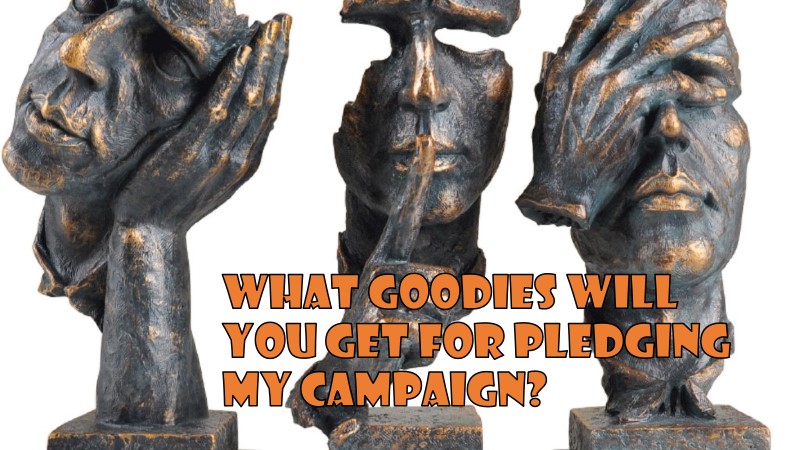
Pledge $5.00 to $9.99: You’ll receive
an ebook copy of THE NEW DANGEROUS VISIONS when it’s released.
Pledge $10.00 to $24.99: You’ll receive
an ebook copy of THE NEW DANGEROUS VISIONS when it’s released
and you’ll be listed as a Supporter in the book.
Pledge $25.00 to $39.99: You’ll receive
an ebook copy of THE NEW DANGEROUS VISIONS when it’s released
an ebook copy of Andrew Fox’s novel FAT WHITE VAMPIRE OTAKU
and you’ll be listed as a Donor in the book.
Pledge $40.00 to $44.99: You’ll receive
a trade paperback copy of THE NEW DANGEROUS VISIONS when it’s released (slight additional shipping fee will be applied)
and you’ll be listed as a Donor in the book.
Pledge $45.00 to $49.99: You’ll receive
a trade paperback copy and an ebook copy of THE NEW DANGEROUS VISIONS when it’s released (slight additional shipping fee will be applied)
and you’ll be listed as a Donor in the book.
Pledge $50.00 to $74.99: You’ll receive
a trade paperback copy and an ebook copy of THE NEW DANGEROUS VISIONS when it’s released (slight additional shipping fee will be applied)
an ebook of Andrew Fox’s novel FAT WHITE VAMPIRE OTAKU
and you’ll be listed as a Donor in the book.
OR
Pledge $50.00 to $74.99: You’ll receive
an ebook copy of THE NEW DANGEROUS VISIONS when it’s released
an ebook of Andrew Fox’s novel FAT WHITE VAMPIRE OTAKU
an ebook copy of Andrew Fox’s novel FIRE ON IRON
and you’ll be listed as a Donor in the book.
Pledge $75.00 to $99.99: You’ll receive
a trade paperback copy and an ebook copy of THE NEW DANGEROUS VISIONS when it’s released (slight additional shipping fee will be applied)
an ebook copy of Andrew Fox’s novel FAT WHITE VAMPIRE OTAKU
an ebook copy of Andrew Fox’s novel FIRE ON IRON
and you’ll be listed as a Donor in the book.
OR
Pledge $75.00 to $99.99: You’ll receive
an ebook copy of THE NEW DANGEROUS VISIONS when it’s released
an ebook copy of Andrew Fox’s novel FAT WHITE VAMPIRE OTAKU
an ebook copy of Andrew Fox’s novel FIRE ON IRON
an ebook copy of Andrew Fox’s novel THE GOOD HUMOR MAN, OR, CALORIE 3501
and you’ll be listed as a Donor in the book.
Pledge $100.00 to $124.99: You’ll receive
a trade paperback copy and an ebook copy of THE NEW DANGEROUS VISIONS when it’s released (slight additional shipping fee will be applied)
an ebook copy of Andrew Fox’s novel FAT WHITE VAMPIRE OTAKU
a signed trade paperback copy of Andrew Fox’s novel FIRE ON IRON
and you’ll be listed as a Patron in the book.
Pledge $125.00 to $149.99: You’ll receive
a trade paperback copy and an ebook copy of THE NEW DANGEROUS VISIONS when it’s released (slight additional shipping fee will be applied)
an ebook copy of Andrew Fox’s novel FAT WHITE VAMPIRE OTAKU
a signed trade paperback copy of Andrew Fox’s novel FIRE ON IRON
a signed trade paperback copy of Andrew Fox’s novel THE GOOD HUMOR MAN, OR, CALORIE 3501
and you’ll be listed as a Patron in the book.
Pledge $150.00 to $199.99: You’ll receive
a trade paperback copy and an ebook copy of THE NEW DANGEROUS VISIONS when it’s released (slight additional shipping fee will be applied)
an ebook copy of Andrew Fox’s novel FAT WHITE VAMPIRE OTAKU
a signed trade paperback copy of Andrew Fox’s novel FIRE ON IRON
a signed trade paperback copy of Andrew Fox’s novel THE GOOD HUMOR MAN, OR, CALORIE 3501
a signed trade paperback copy of Andrew Fox’s novel BRIDE OF THE FAT WHITE VAMPIRE
and you’ll be listed as a Patron in the book.
Pledge $200.00 to $249.99: You’ll receive
a trade paperback copy and an ebook copy of THE NEW DANGEROUS VISIONS when it’s released (slight additional shipping fee will be applied)
an ebook copy of Andrew Fox’s novel FAT WHITE VAMPIRE OTAKU
a signed trade paperback copy of Andrew Fox’s novel FIRE ON IRON
a signed trade paperback copy of Andrew Fox’s novel THE GOOD HUMOR MAN, OR, CALORIE 3501
a signed trade paperback copy of Andrew Fox’s novel BRIDE OF THE FAT WHITE VAMPIRE
a signed trade paperback copy of Andrew Fox’s novel FAT WHITE VAMPIRE BLUES
and you’ll be listed as a Sponsor in the book.
Pledge $250.00 to $499.99: You’ll receive
a trade paperback copy and an ebook copy of THE NEW DANGEROUS VISIONS when it’s released (slight additional shipping fee will be applied)
an ebook copy of Andrew Fox’s novel FAT WHITE VAMPIRE OTAKU
a signed trade paperback copy of Andrew Fox’s novel FIRE ON IRON
a signed trade paperback copy of Andrew Fox’s novel THE GOOD HUMOR MAN, OR, CALORIE 3501
a signed trade paperback copy of Andrew Fox’s novel BRIDE OF THE FAT WHITE VAMPIRE
a signed trade paperback copy of Andrew Fox’s novel FAT WHITE VAMPIRE BLUES
you’ll be listed as a Sponsor in the book
and a character in one of the anthology’s stories will be given your name (or the name of your choice).
Pledge $500.00 to $999.99: You’ll receive
a trade paperback copy and an ebook copy of THE NEW DANGEROUS VISIONS when it’s released (slight additional shipping fee will be applied)
an ebook copy of Andrew Fox’s novel FAT WHITE VAMPIRE OTAKU
a signed trade paperback copy of Andrew Fox’s novel FIRE ON IRON
a signed trade paperback copy of Andrew Fox’s novel THE GOOD HUMOR MAN, OR, CALORIE 3501
a signed trade paperback copy of Andrew Fox’s novel BRIDE OF THE FAT WHITE VAMPIRE
a signed trade paperback copy of Andrew Fox’s novel FAT WHITE VAMPIRE BLUES
you’ll be listed as a Sponsor in the book
a character in one of the anthology’s stories will be given your name (or the name of your choice)
and you will be invited to join editor Andrew Fox at lunch or dinner in conjunction with a Mid-Atlantic-area science fiction convention.
Pledge $1,000.00 to $1,499.99: You’ll receive
a trade paperback copy and an ebook copy of THE NEW DANGEROUS VISIONS when it’s released (slight additional shipping fee will be applied)
an ebook copy of Andrew Fox’s novel FAT WHITE VAMPIRE OTAKU
a signed trade paperback copy of Andrew Fox’s novel FIRE ON IRON
a signed trade paperback copy of Andrew Fox’s novel THE GOOD HUMOR MAN, OR, CALORIE 3501
a signed trade paperback copy of Andrew Fox’s novel BRIDE OF THE FAT WHITE VAMPIRE
a signed trade paperback copy of Andrew Fox’s novel FAT WHITE VAMPIRE BLUES
you’ll be listed as a Super-Patron in the book
a character in one of the anthology’s stories will be given your name (or the name of your choice)
ü you will be invited to join editor Andrew Fox at lunch or dinner in conjunction with a Mid-Atlantic-area science fiction convention
and Andrew Fox will provide a professional editorial appraisal of a short story written by the donor (up to 10,000 words).
Pledge $1,500.00 to $1,999.99: You’ll receive
a trade paperback copy and an ebook copy of THE NEW DANGEROUS VISIONS when it’s released (slight additional shipping fee will be applied)
an ebook copy of Andrew Fox’s novel FAT WHITE VAMPIRE OTAKU
a signed trade paperback copy of Andrew Fox’s novel FIRE ON IRON
a signed trade paperback copy of Andrew Fox’s novel THE GOOD HUMOR MAN, OR, CALORIE 3501
a signed trade paperback copy of Andrew Fox’s novel BRIDE OF THE FAT WHITE VAMPIRE
a signed trade paperback copy of Andrew Fox’s novel FAT WHITE VAMPIRE BLUES
you’ll be listed as a Super-Patron in the book
a character in one of the anthology’s stories will be given your name (or the name of your choice)
you will be invited to join editor Andrew Fox at lunch or dinner in conjunction with a Mid-Atlantic-area science fiction convention
and Andrew Fox will provide a professional editorial appraisal of a novel-length manuscript written by the donor (up to 125,000 words).
Pledge $2,000.00 to $2,499.99: You’ll receive
a trade paperback copy and an ebook copy of THE NEW DANGEROUS VISIONS when it’s released (slight additional shipping fee will be applied)
an ebook copy of Andrew Fox’s novel FAT WHITE VAMPIRE OTAKU
a signed trade paperback copy of Andrew Fox’s novel FIRE ON IRON
a signed trade paperback copy of Andrew Fox’s novel THE GOOD HUMOR MAN, OR, CALORIE 3501
a signed trade paperback copy of Andrew Fox’s novel BRIDE OF THE FAT WHITE VAMPIRE
a signed trade paperback copy of Andrew Fox’s novel FAT WHITE VAMPIRE BLUES
you’ll be listed as a Super-Patron in the book
a character in one of the anthology’s stories will be given your name (or the name of your choice)
you will be invited to join editor Andrew Fox at lunch or dinner in conjunction with a Mid-Atlantic-area science fiction convention
Andrew Fox will provide your choice of a professional editorial appraisal of a short story written by the donor (up to 10,000 words) or a professional editorial appraisal of a novel-length manuscript written by the donor (up to 125,000 words)
and you’ll receive a SIGNED vintage MS-DOS laptop computer, used by Andrew Fox to write one of his novels, with multiple drafts of the author’s novels FAT WHITE VAMPIRE BLUES and BRIDE OF THE FAT WHITE VAMPIRE on the hard drive.
Pledge $2,500.00 or more: You’ll receive
a trade paperback copy and an ebook copy of THE NEW DANGEROUS VISIONS when it’s released (slight additional shipping fee will be applied)
an ebook copy of Andrew Fox’s novel FAT WHITE VAMPIRE OTAKU
a signed trade paperback copy of Andrew Fox’s novel FIRE ON IRON
a signed trade paperback copy of Andrew Fox’s novel THE GOOD HUMOR MAN, OR, CALORIE 3501
a signed trade paperback copy of Andrew Fox’s novel BRIDE OF THE FAT WHITE VAMPIRE
a signed trade paperback copy of Andrew Fox’s novel FAT WHITE VAMPIRE BLUES
you’ll be listed as a Super-Patron in the book
a character in one of the anthology’s stories will be given your name (or the name of your choice)
you will be invited to join editor Andrew Fox at lunch or dinner in conjunction with a Mid-Atlantic-area science fiction convention
Andrew Fox will provide your choice of a professional editorial appraisal of a short story written by the donor (up to 10,000 words) or a professional editorial appraisal of a novel-length manuscript written by the donor (up to 125,000 words)
you’ll receive a SIGNED vintage MS-DOS laptop computer, used by Andrew Fox to write one of his novels, with multiple drafts of the author’s novels FAT WHITE VAMPIRE BLUES and BRIDE OF THE FAT WHITE VAMPIRE on the hard drive
and THE LAST DANGEROUS VISIONS will be dedicated to you (or to a relative or friend of your choice).

I believe in this project. I think it is an important thing to do, important for science fiction, which I love, and important for the continued health of the free-speech culture we enjoy in the United States.
I believe in this project strongly enough that I’m willing to put my own money where my mouth (or touch typing) is. If I don’t get funded through Kickstarter, THE NEW DANGEROUS VISIONS will still be published through MonstraCity Press. I’ll have to reduce the word rate I can offer, unfortunately, and I’ll probably have to limit the amount of fiction I’ll be able to pay for. But I can promise that THE NEW DANGEROUS VISIONS will see the light of day, regardless. And any profit I’m fortunate enough to make from the first volume will then get dedicated to a second, larger volume (perhaps to be successfully funded through a new crowd-funding campaign).
Science fiction will always make room, make room (h/t: Harry Harrison) for contrarians, for heretics, for the unfashionable and unpopular, for the ugly, for outcasts, for stubborn failures who won’t say die, for dreamers at the fringe. Without them, the centuries-long conversation at the heart of science fiction – Idea A being built upon by Idea B being refuted by Idea C that is then modified by Idea D – becomes a sterile echo chamber. And should that happen, science fiction – written science fiction, the fecund seed from which all other modes of science fiction sprout – will ultimately suffer the sad fate of poetry, declining from a mass medium that once spoke to the minds and hearts of large audiences to a withered stump, of interest only to a shrunken circle of its writers and practitioners and a few academics, an inward-looking, incestuous community characterized by log-rolling, desperate status-seeking, ideological nepotism, obscurantism, and futility.
In this era of accelerating technological change and resultant social change, we need a healthy, vigorous, daring and courageous science fiction more than ever. To point out the possible perils up ahead. To point out future opportunities most of us may never otherwise have imagined. To get us to examine our thinking, to revisit our assumptions, to rearrange our mental furniture. To enable us to meet the onrushing future, not blindly, not with an anticipatory cringe or defensive cower, but with our eyes wide open… braced for the worst, but filled with reasoned hope for much, much better to come.
Risks and challenges
The primary risk is that if I don’t hit my funding target of $7,000, I won’t be able to pay a professional rate of $.06/word, and I probably won’t be able to buy 70,000 words of original fiction. However, I am personally committed to this project. If I miss my Kickstarter goal and receive no funding through Kickstarter, I will still solicit original stories, but at a sub-professional word rate, and I will most likely purchase less original fiction. In the latter case, I will be less able to attract submissions from veteran professional writers. However, I anticipate being able to make up this shortfall with submissions from talented newcomers.
—————————————————————————-
The day after I launched the Kickstarter project, I received the following email from my correspondent with the Ellison Estate:
—————————————————————————-
Director
May 17, 2019, 2:18 PM
to me
Mr. Fox,
While the press of urgent business has not allowed us to reply to your last message, silence does not imply consent.
Know that both “Harlan Ellison” and “Dangerous Visions” are registered trademarks of The Kilimanjaro Corporation. ANY unauthorized use of either constitutes trademark infringement under 15 U.S. Code §1114.
Revise your Kickstarter to remove ALL references to “Harlan Ellison” and “Dangerous Visions,” or The Kilimanjaro Corporation will take the necessary legal action.
XXXXX XXXXXXXX
Project Director, The Kilimanjaro Corporation
——————————————————————————
I’d guestimate that email took all of two minutes to write. Why the gentleman from The Kilimanjaro Corporation didn’t respond to my April 22 8:07 PM email with similar promptness as he responded to my April 22 7:23 PM email is anyone’s guess. All it would have taken is an even shorter note to the effect of, “Dangerous Visions is a registered trademark of The Kilimanjaro Corporation; we would appreciate it if you would select a different title for your project,” and I would have honored that request then and there.
A trademark’s a trademark. I get it. I’ll comply.
However, what I don’t get is trademarking the name “Harlan Ellison”. Harlan Ellison was a major figure in science fiction and in American literary, film, and TV culture for upwards of sixty years. Does the Estate plan to try to control, through legal action, all discussion of Ellison’s work and legacy, whether online or in print? I could understand the Estate wanting to put a halt to unauthorized marketing and sales of Harlan Ellison Corn Flakes, or, more on-point, Harlan Ellison Underwood Typewriter Replicas or Harlan Ellison Anti-Anger Herbal Remedy. But trying to squelch any mention of “Harlan Ellison” in conjunction with a planned anthology that will exist primarily as a responsa to Ellison’s most important work, a milestone in science fiction’s development?
That I don’t get. It is as if the Estate wants to see Harlan Ellison gradually fade into undeserved obscurity. Because if they keep up their heavy-handed efforts to control all discussion of and creative engagement with the legacy of the late author, in twenty years’ time, no one under the age of 70, with the exception of a few obsessive bibliophiles, will have ever heard of Harlan Ellison. And I think that will be a shame.



